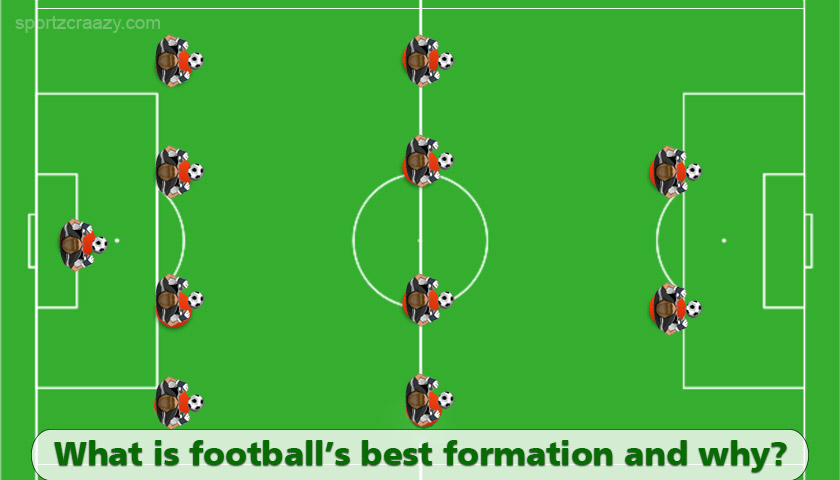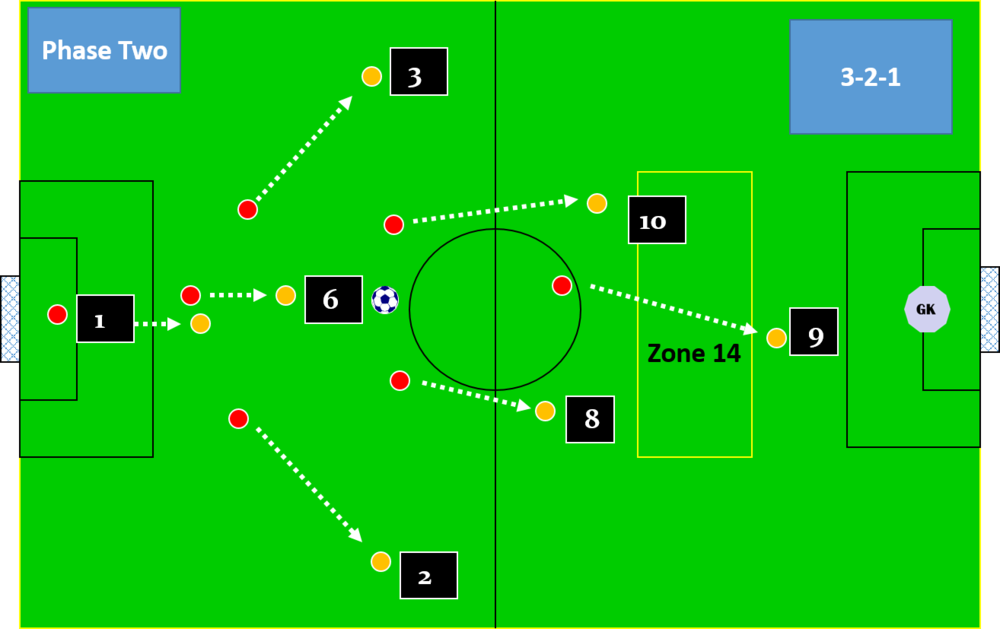What is Football’s Best Formation and Why?
Unlike Rugby, a Football formation is not set in stone for an individual – it does not limit a player’s movements to a certain section of the field like in Rugby. A formation is instead a rough draft that assigns the primary role for each player. In football, among the 11 players, only the goalie is sequestered to protect a single zone of the field – because, of course, it is the only task that has been commissioned to them. The remainder of the 10 players is divided in rows to outline what kind of role and order they should maintain. This is roughly the definition of a formation.
Football formations over the years
Like other aspects, formations have seen a progressive evolution throughout the lifetime of football as a sport. This fact bluntly makes itself known when one just glosses over the earliest iterations of a planned formation. By today’s standards, these would seem extraordinarily ridiculous. To incite examples, one may take notes from the first-ever international football match in recorded history – England vs Scotland on 30th November 1872.
The game had yielded a draw with a clean sheet for both teams, and this is a counterintuitive result that resisted all predictions from the betting rings, commentators, sponsors, coaches, and the players themselves. To clarify things: defensive football did not exist in the nineteenth century, nor would it emerge sincerely until half a century later. The football of the 1880s was all for the offense. The squad was filled to the brim with strikers as opposed to other roles – most of these gifted dribblers for the English team, whose motto was not to pass the ball until deep behind the enemy lines when it became the only way of advancement.
In the match, England had eight forwards. They played a 1-1-8 formation – a sole defender for picking off loose balls and push it upfield via the midfielder who would, more often than not, be upfield as well. Scottish football was focused on passing between pairs, which came as a surprising novelty to the individual player-oriented English school of football. And yet Scotland had a 2-2-6 formation, heavily geared with strikers.
| Also Read: Top 10 Best Goalkeepers in the World |
These were only the earliest years of association football, and the strikers galore shifted into a more balanced trend as the years passed by. A long-standing successful formation – the first of its kind – was found in the 2-3-5 of Welsh football, the first example of it found in 1877. Up till the 1930s, this ‘pyramid’ formation eventually had taken the place of a norm for football across the British isles. Danubian football was its natural corollary, where one of the 5 striking players resorted to a more defensive half-back role – something of an equivalent for the defensive midfielder of today. This then went on to create an actual defense line, first through the Italian 2-3-2-3, and then in WM, the 3-2-2-3. In the 1960s, Tottenham Hotspur’s successful Danny Blanchflower, Dave Mackay, and John White midfield triad perfected the first prototype 3-3-4 midfield.
The 4-4-2 Football Formation
For the people in our generation, especially the Gen-X, though, the face of football is the 4-4-2, with prolific currency across the world throughout the latter half of the 80s and the 90s. The end-stage of football’s development into having a full-fledged defense line saw the rise of prominent defenders like Maldini, Puyol, and Nesta. Thanks to the 4-4-2 football, man-marking became as legitimate as zonal marking. A catenaccio could be pulled off solely with an average defense line with average players.
Sachhi and Capello’s AC Milan was the poster child to champion this formation. Like much of modern football, the shifting trend put more and more anchoring on the shoulders of the midfielders. The midfielders make or break the 4-4-2 and its recent deviants – they become the collective engine filling in for early defense, tackle, and clearing during high rival pressure, as well as getting up on aggressive runs, playmaking and setting up the goals. A very common version of this is the 4-4-1-1 if there are the right set of strikers – one with more playmaking and lane-changing capabilities, the odd in-the-hole player. This point might have clarified one thing to you:
| Also Read: List of Famous Soccer Awards |
The success of a formation depends on whether there are players to fit the requirements of it. Without a befitting far-off striker and a ‘hole’ player to create the goals, there can be no good 4-4-1-1, and the apparently less effective 4-4-2 will become the safe resort.
The second huge factor is the presence of great defensive midfielders. It is players like Yaya Toure and Javier Mascherano that can truly bring 4-4-2 into fruition, allowing the rest of the team to be on the attack at every opening. The standard midfield in the formation is made with a defensive and an offensive midfielder, while the width-huggers make wing runs when the occasion is ripe.
The Best Football Formation(s)
To answer the question, then, what is football’s best formation? None. There can be no singular best formation. If we deal with the most successful formation in football, it should be the 4-4-2 which we already discussed. But when we say ‘best formation’ the answer would be context-sensitive. Who are we going up against? What kind of players do we have? Where is our primary talent? Which row can the more gifted players play?
What Style of Football is Team Playing?
The answer to this will determine ‘the best formation’. So here is a rough outline for which formations proved to be the most effective under a specific style of football.
If one wants an intimidating wall for a defense line, and use it as a form of mental pressure or to eliminate the one oddly gifted striker who the opponent relies on, the formation can be 5-3-2 (or 4-1-3-2 if there is a Mascherano, a Matic, a Kante or a Busquets in the squad).
| Also Read: Everything you need to know about EPL (English Premier League) |
4-1-3-2 is also definitely the best formation if there are a pair of great wingers.
3-5-2 makes for a risk vs. reward counterattacking football that is most exciting both to watch and play.
Pep’s trademark Spanish tiki-taka can come to fruition with 4-3-3 for holding up possession.
With a quartet of technically gifted and good all-rounder midfielder in a 4-4-2, which has stood the test of time and can be seen to this date, is a stable and highly adaptable form of football that takes the middle ground between pressure, counterattack and possession.










